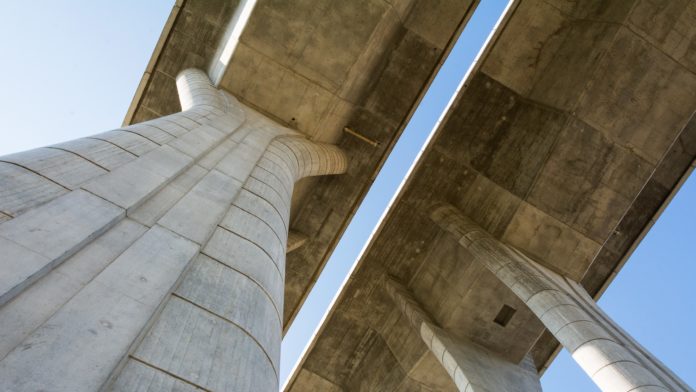Concrete production is linked to around 7% of global CO2 emissions. Its main ingredient, cement, releases a kilogram of CO2 for every kilogram produced, most of which happens during calcination which is an integral part of the manufacturing process.
Moreover, no green-friendly alternative rivals it for durability and strength. But CarbonCure, a Canadian cleantech company, has a unique solution that can both trap carbon in concrete and produce a stronger material.
Their mission is to standardize the use of carbon-infused concrete in global production. Full adoption of this ‘green concrete’ could have the potential to reduce CO2 emissions by up to 500 megatonnes per year, according to the group.
Carbon can be chemically converted into minerals and stored within concrete, sequestering it forever. Even better, the addition of carbon improves the compressive strength of the mix and doesn’t affect properties like set-time, air content, texture, or durability, making for a superior product.
It’s a win-win for businesses in need of an economically-viable solution to meet the demand for green building materials.
CarbonCure’s founder, Robert Niven, saw the opportunity for this niche during his time at McGill University where he studied engineering. Niven was inspired after attending the COP-11 UN climate negotiations in 2005, and he went on to write a thesis exploring the benefits of CO2 reactions with concrete.
“It really got me thinking about how I could apply my studies to more actively combat climate change, which ultimately led to the inspiration behind CarbonCure Technologies,” said Niven in an interview with Going Green.
Hundreds of plants have adopted CarbonCure tech
CarbonCure sources waste CO2 from large emitters like industrial gas suppliers and cement plants themselves. The recycled CO2 is subsequently infused into the wet concrete during mixing. For every m3 of this green concrete, there is an average reduction of 17 kg in CO2 emissions. To put that in context, the carbon footprint of a high-rise building with this technology would be 680 tonnes less than typical.
CarbonCure’s technology has been installed in nearly 250 concrete plants across North America and Southeast Asia, with more than 4.2 million cubic metres of concrete supplying all sorts of construction projects from airports and roads to high-rise towers.
The technology is now a feature of close to 250 concrete plants throughout North America as well as Southeast Asia, where over 4.2 million m3 of green concrete is in use. In Canada, it has been featured in projects including the Mackenzie Vaughan Hospital, the RBC Multipad Arena in Nova Scotia, and Gore Meadows Community Centre in Brampton.
Repurposing CO2 is an emerging industry with big prospects. The Global CO2 Initiative’s (GCI) 2016 report estimates this will become a $1 trillion industry come 2030, with a potential for up to 1.4 gigatonnes of CO2 emissions to be reduced. The GCI cited CarbonCure as having the most scalable technology with which to exploit this growing area.
Other groups are making use of carbon sequestration technologies. The Solid Carbon project is a collaboration between Canadian and international scientists with aims to ‘suck’ CO2 out of the atmosphere and inject it into basalt rock at the bottom of the sea.
Earlier this year, CarbonCure was named the Cleantech Company of the Year by the San Francisco-based Cleantech Group.
“CarbonCure is on its way to achieving 500 megatons of CO2 reductions annually,” commented Niven in a press release, “helping to decarbonize the built environment while positioning the concrete industry to lead the transition to the new low-carbon economy.”








































